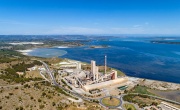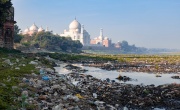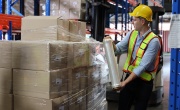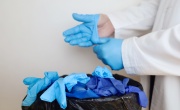Waste entanglement poses greatest threat to marine life

‘Using expert elicitation to estimate the impacts of plastic pollution on marine wildlife’ was published in the Marine Policy journal by environmental organisation Ocean Conservancy and the Commonwealth Scientific and Industrial Research Organisation (CSIRO).
The ‘first-of-its-kind’ study was based on a survey from 274 ‘experts’ representing 19 fields of study. Scores were assigned for entanglement, ingestion and contamination for the 20 waste items from 30 years of data Ocean Conservancy’s International Coastal Cleanup.
Among the items, abandoned and lost fishing gear like nets, fishing lines and buoys were found to pose the greatest overall threat to marine wildlife. This is primarily because of entanglement, which is likely to have a lethal effect.
In a close second, plastic bags and balloons had the greatest ingestion impact, along with plastic utensils, as they are often confused for food by marine mammals.
The Ocean Conservancy estimates that eight million metric tonnes of plastic leak into the world’s ocean every year, a figure that ‘continues to grow’. Without concerted global action, it says, there could be one ton of plastic for every three tons of fish by 2025, leading to significant environmental, economic and health issues.
At least 80 per cent of ocean plastic originates from land-based sources, it says, and the study says that reducing the amount of mismanaged waste in the 20 countries where the mismatch between waste generation and the capacity to manage it is greatest could result in a nearly 40 per cent decline in inputs of plastic to the ocean.
The study confirms that there are ‘likely to be substantial numbers of animals injured or killed by fishing line, plastic bags, balloons and other plastic consumer items every year’ says Chris Wilcox, senior researcher at CSIRO and lead author on the paper.
Trash Free Seas Alliance
Nicholas Mallos, Director of the Trash Free Seas Program at CSIRO, said: “We now have the best, most comprehensive assessment of trash and plastic waste on some of our most iconic marine wildlife.
“With this knowledge comes the responsibility to seek the most effective solutions to stem the tide of plastics into our oceans. These solutions must range from changing our own behaviour as consumers to local efforts like coastal cleanups and product-specific policy, to transformative ways to manage plastic waste at the global scale.”
The Trash Free Seas Alliance is an effort by the Ocean Conservancy to unite industry, science and conservation leaders who share a common goal for pollution free oceans.
Jeff Boehm, Executive Director of The Marine Mammal Centre (part of Trash Free Seas), said: “We have seen a striking number of marine mammals harmed by ocean plastic – from seal pups to sperm whales. While bag bans and beach cleanups are a positive step forward, larger scale solutions are needed for the ocean plastic problem.
“By working with industry, conservation groups, scientists and governments to reduce the amount of plastic going into the ocean, we can dramatically improve the lives of marine mammals and other wildlife.”
Stemming the tide of plastic pollution
The study into marine threats follows on from a report by the Ocean Conservancy and McKinsey Center for Business and Environment, Stemming the Tide, released in September last year.
The report outlines land-based strategies, primarily by reducing the plastic pollution of the top five countries where the consumption of plastics exceeds the local waste management capacity.
In the short and medium term, the report calls for accelerated development of waste collection and plugging of post-collection leakage, followed by the development and rollout of commercially viable treatment options. In the long term, the report identifies the critical need for innovations in recovery and treatment technologies, development of new materials and product designs that better facilitate reuse or recycling.
As well as preventative measures, organisations are also developing measures to extract existing plastic pollution from the oceans. 21-year-old entrepreneur Boyan Slat set up The Ocean Cleanup, which is currently creating barrier technology designed to trap plastic litter.
The 100 metre-long test barrier will be trialled in the North Sea later this year, with the ultimate goal of deploying a 62 mile-long barrier across the Great Pacific Garbage Patch.
The full Ocean Conservancy report can be downloaded from the organisation’s website.




